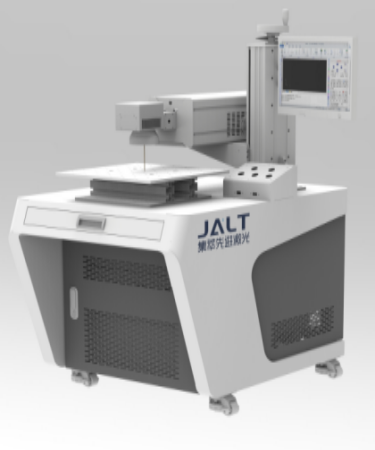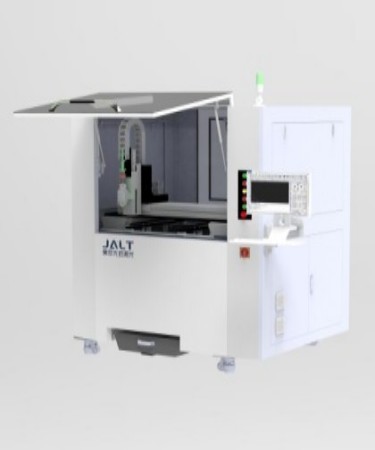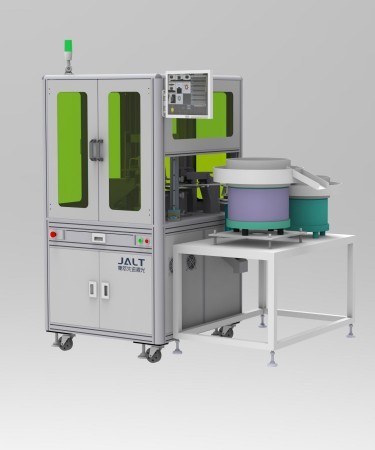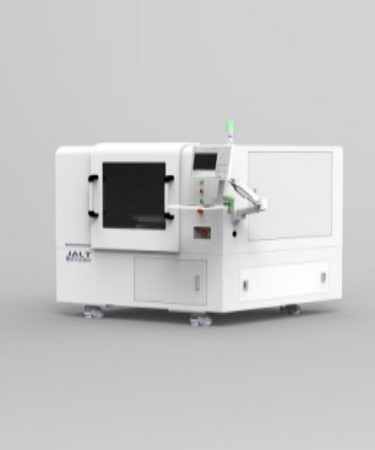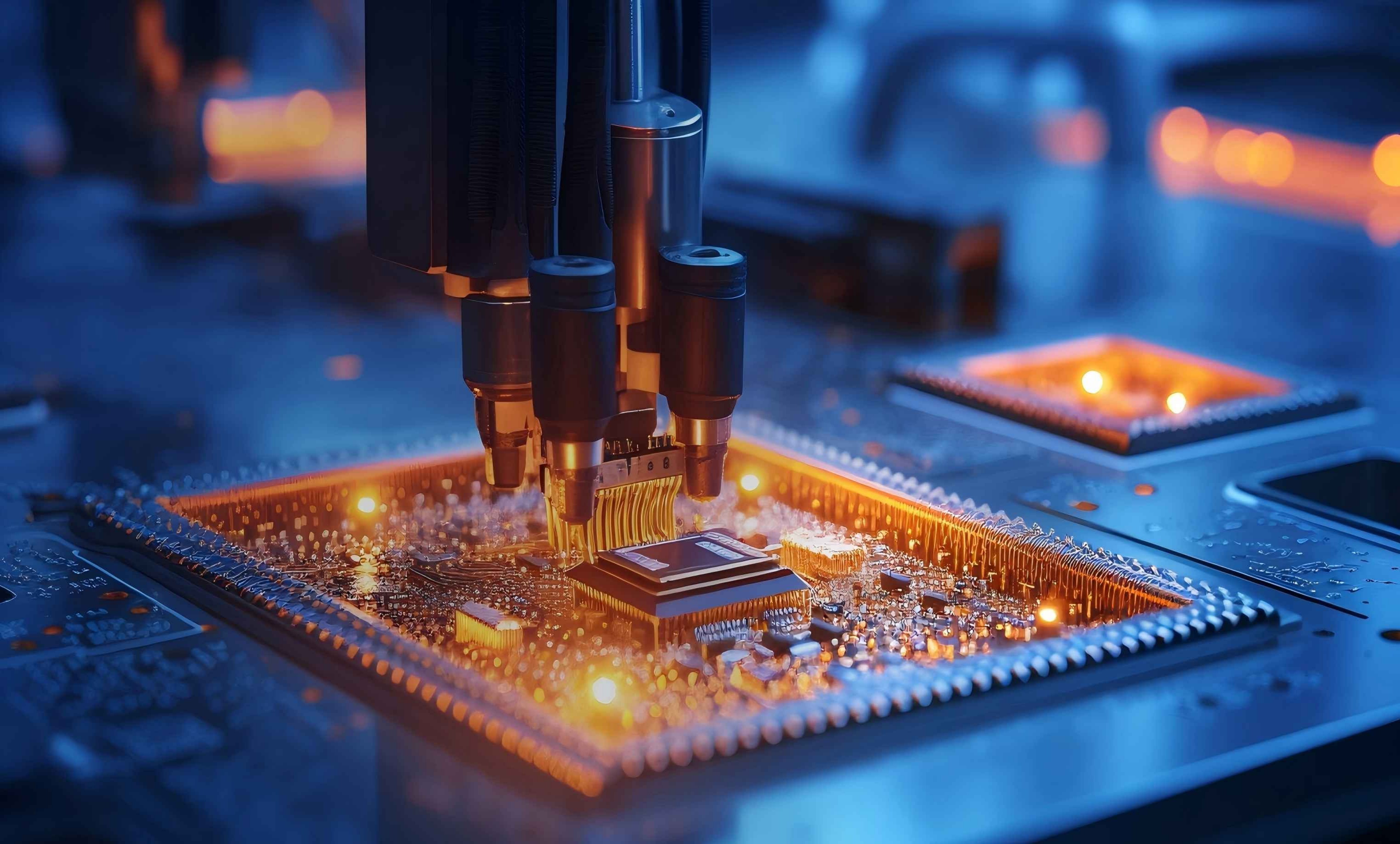
News
PhD students from Jiaotong University are 'cross-disciplinary' studying lasers, as the Yangtze River Delta National Innovation Center collaborates with schools and enterprises to cultivate engineering talents.
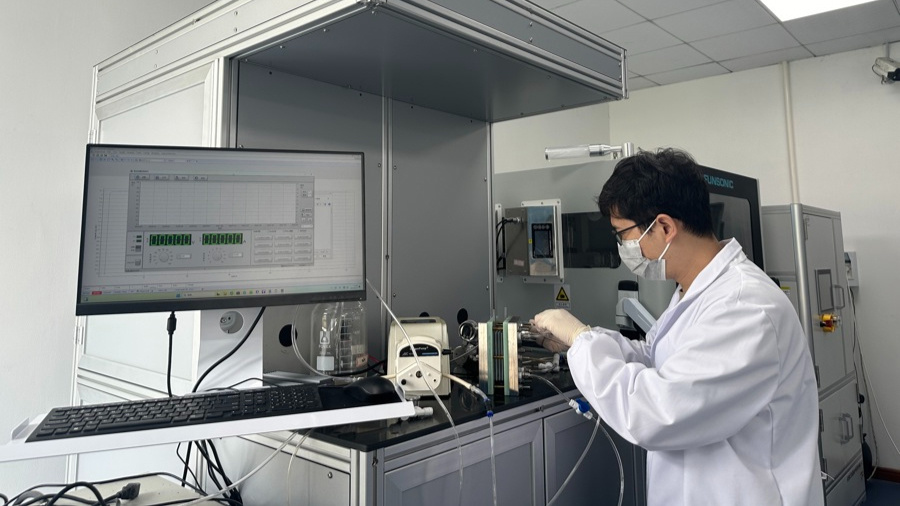
Recently, Yu Jiabin, a graduate student from Shanghai Jiao Tong University, obtained his doctoral degree, concluding his journey of 'cross-disciplinary' research at the Advanced Laser Technology Research Institute of the National Technology Innovation Center in the Yangtze River Delta. As a PhD in fuel cell engineering, he developed a laser detection platform for fuel cell stacks under the guidance of laser experts. It can detect surface defects of the stack with 360-degree coverage and a resolution of less than 1 micron, far surpassing traditional visual inspections in both accuracy and efficiency. Currently, this equipment has been used by Shanghai Wenjing Energy Technology Co., Ltd., increasing the efficiency of incoming inspection of single plates from 30 pieces/hour to 80 pieces/hour.
Dr. Yu's 'cross-disciplinary' research originated from the collaboration between the Yangtze River Delta National Innovation Center and Wenjing Energy. Last year, this company engaged in fuel cell R&D and manufacturing posed a challenge, hoping to solve the technical difficulties in detecting and welding ultra-thin bipolar plates for commercial vehicle fuel cells. After research and needs assessment, the Yangtze River Delta National Innovation Center facilitated cooperation between the Advanced Laser Institute and Wenjing Energy. In June last year, both parties signed a cooperation agreement worth 10 million yuan to apply laser technology in the manufacturing and assembly of core components for fuel cells.
After reaching a research and development cooperation agreement, a joint talent cultivation project was launched. With the promotion of the Yangtze River Delta National Innovation Center, Shanghai Jiao Tong University's Fuel Cell Research Institute, Advanced Laser Institute, and Wenjing Energy joined forces to focus on engineering research related to defect detection, surface treatment, and assembly processes for mass production of core components for fuel cells, jointly cultivating talents with backgrounds in both fuel cells and laser processing to support advancements in China's fuel cell manufacturing technology and hydrogen energy applications.
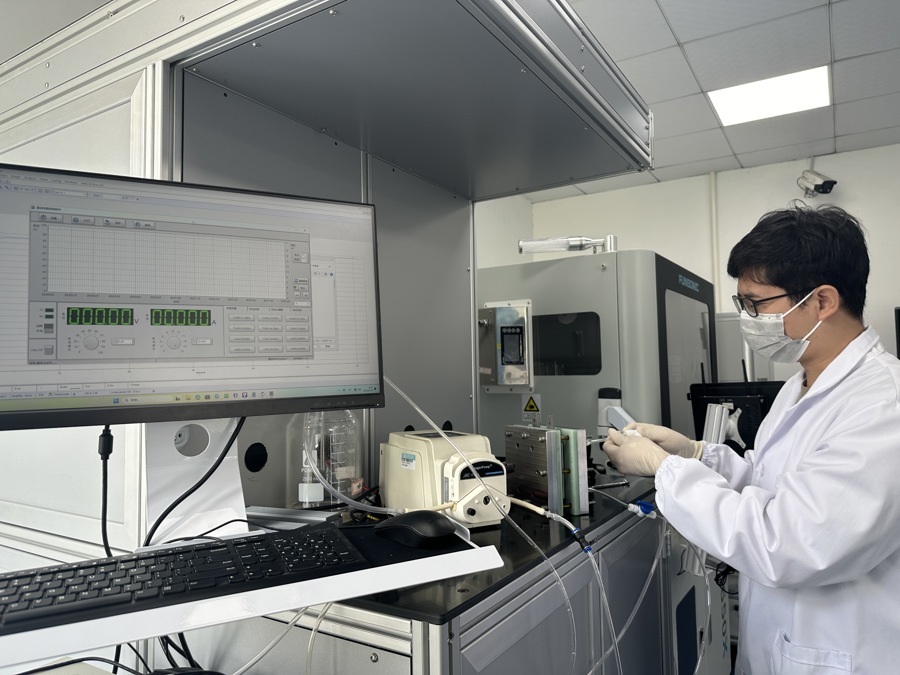
Dr. Yu Jiabin conducting tests on fuel cell stacks.
In July last year, 16 graduate students and postdoctoral researchers from Jiao Tong University entered the Advanced Laser Institute with their projects to explore the application of laser technology in various aspects such as cutting, welding, and inspection of fuel cell components. During the joint training period, the Yangtze River Delta National Innovation Center provided scholarships ranging from 12,000 to 50,000 yuan per person per year.
"Previously at Jiao Tong University, I was engaged in basic theoretical research, while the Laser Institute is an enterprise where we need to solve practical engineering problems hands-on," Yu Jiabin told reporters. "After a year of study, I collaborated with teachers at the Laser Institute to develop a laser detection platform for fuel cell stacks. I also improved my engineering practice and teamwork skills; I feel I have gained a lot."
Today, these students' research results in laser technology have been applied at Wenjing Energy, transforming into new productive forces. According to Liu Qing, director of the Yangtze River Delta National Innovation Center, joint talent cultivation and sharing are key to promoting deep integration between industry and academia. Promoting joint training of young scientific talents among universities, research institutes, and enterprises can become an important lever for advancing comprehensive reforms in 'education, science and technology talent systems'. "The report from the 20th National Congress of the Communist Party first deployed and coordinated education, science and technology, and talent as a 'trinity', while the third plenary session of the 20th Central Committee further deployed deepening 'trinity' reforms, which has greatly encouraged us as science and education workers," said Liu Qing, former vice president of Chongqing University and director of Tsinghua University's Institute of Metal Materials.
As of August this year, the Yangtze River Delta National Innovation Center has jointly trained 5,884 graduate students through an industry-education integration model. In collaboration with Shanghai Jiao Tong University, Tongji University, East China Normal University, and other universities in Shanghai, the center focuses on real industrial needs proposed by leading enterprises as topics for research projects. It uses affiliated professional research institutes and leading enterprises as cooperation platforms while employing high-level researchers and senior engineers from enterprises as mentors to implement a 'dual mentor system' and establish scholarships to cultivate innovative talents with practical skills that drive industry-academia-research cooperation and technology transfer.
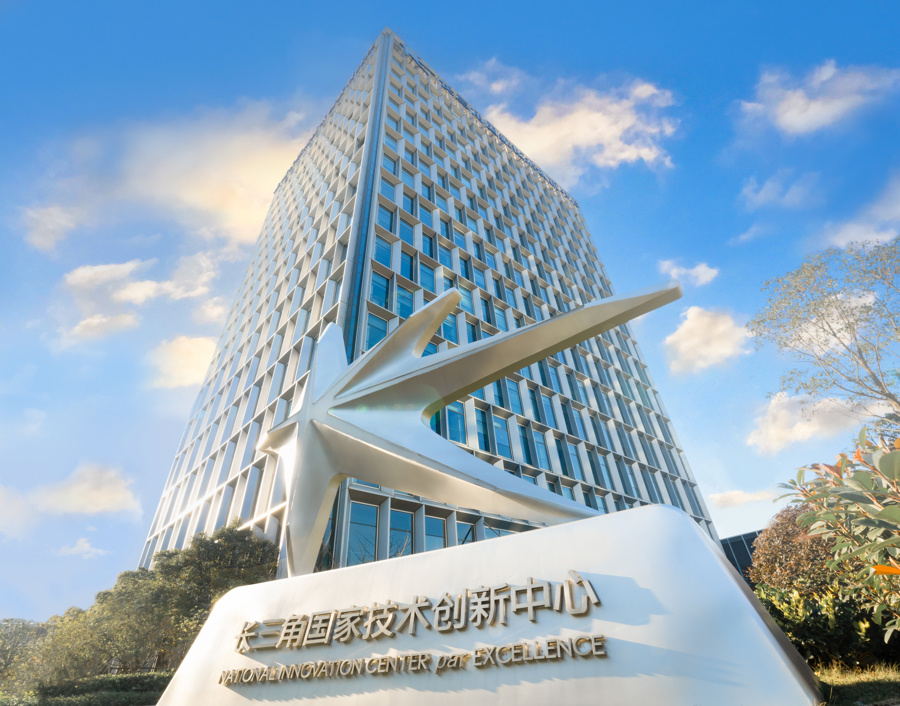
The Yangtze River Delta National Technology Innovation Center is located in Zhangjiang Science City in Shanghai.
Liu Qing introduced that surveys show that over 40% of domestic fresh master's and doctoral graduates leave their jobs within a year after entering companies. The main reason is that graduates do not have enough understanding of companies when applying for jobs. Cultivating graduate students through school-enterprise cooperation helps address this issue—graduate students work on real industrial needs projects within companies for 1-2 years which cultivates their engineering practice abilities while allowing them to gain an in-depth understanding of these companies; this is beneficial for mutual engagement between talents and enterprises.
In this regard, Germany's Fraunhofer Society is worth learning from. More than 70 research institutes under this society are established based on universities where department heads or renowned professors serve as directors; about 40% of researchers at these institutes are graduate students from corresponding universities. Most projects at these institutes come from technological demands from enterprises; 90% of graduate students go on to work in companies after graduation.
"Building bridges between industry-academia-research by organizing graduate students to enter enterprises to engage in industrial technology research under the guidance of university professors and enterprise R&D leaders so that their research results can be utilized by industries is one of the successful secrets of the Fraunhofer Society," Liu Qing said. "Our universities face issues with disconnection between engineering talent cultivation and industry needs. We also need to build bridges so that more engineering students and faculty can enter enterprises to gain insights into new trends in industrial technology development to cultivate high-quality talents who possess both R&D innovation capabilities and practical problem-solving skills for our country."
Source: Shangguan News


